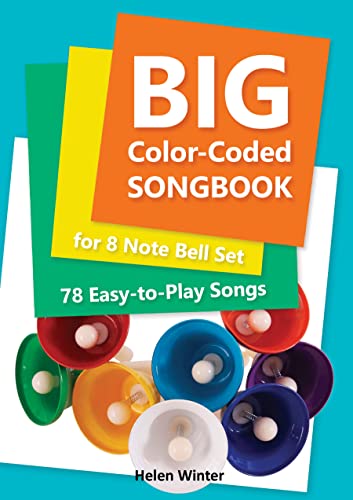From Color to Sound. The Advantages of Color Bells as a Musical Instrument

The color bell set is a highly effective tool for teaching the system where certain musical notes are associated with specific colors. Each bell is separated and colored according to its corresponding note, which makes it easy for students to identify and remember the colors associated with each note.
This color-coded approach can be especially helpful for young children who are just beginning to learn music. By associating each note with a specific color, children can quickly and easily identify the correct note to play without needing to first learn traditional musical notation.
In addition to being a useful teaching tool, the color bell set can also be a fun and engaging way for children to learn music. The bright, colorful bells can help capture children's attention and make the learning process more enjoyable.
Also, it is easy to play, as each note is created by an individual bell, making it easier to remove unused notes and reduce confusion. It is a durable instrument suitable for classroom or family use, and it functions individually for easy separation. This makes it easy to share and participate in group activities, and it is reasonably priced, costing less than class Orff instruments.
Another benefit of the color bell set is that it is permanently well-tuned, eliminating the need for tuning pegs. This ensures that the sound produced is always of high quality. The bell set is also great for teaching chords, and it allows for immediate success in creating beautiful tones, which is essential for beginners of any age.
Playing with a group of ringers teaches patience, tolerance, and cooperation. Additionally, the color bell set is ideal for teaching note duration, pitch, musical scales, rhythm, and melody, making it a versatile instrument that can aid in musical education. The unique sound of the bells makes it a perfect educational tool for children, but it can also be ideal for seniors who can play in a bell orchestra.
Encouraging kids to play music by including it in a game can be a highly effective and enjoyable approach. Even children with no prior musical experience can begin to play simple songs immediately using this method, without needing to first learn traditional music notation.
For young children just starting with music, color bell set are both great options. These instruments are simpler and more accessible than a piano and are often recommended by solfeggio teachers for beginners.
By making music a fun and engaging experience, children can develop a love and appreciation for music that will stay with them for a lifetime. And by starting with simple, accessible instruments and teaching methods, children can build a strong foundation of musical knowledge and skills that will serve them well as they continue to grow and develop as musicians.
There are several types of music color bells available on the market, each with its unique features and capabilities. Here are some of the most common types:
1. Handbells: Handbells are the most traditional type of music color bells. They are played by hand and produce a clear, bell-like sound. Handbells are perfect for solo performances and small group settings.
2. Desk bells: Desk bells are miniature handbells that are designed for use on a tabletop or desk. They are easy to play and perfect for use in small classrooms or home settings.
3. Resonator bells: Resonator bells are similar to handbells, but they have a metal resonator that amplifies the sound. They produce a bright, clear tone and are ideal for use in larger group settings.
4. Boomwhackers: Boomwhackers are a unique type of music color bell that is made from plastic tubes of varying lengths. They produce a deep, resonant sound and are ideal for teaching rhythm and melody.
5. Bell sets with electronic components: Some music color bell sets come with electronic components that allow them to be connected to a computer or other device. These sets often come with software that provides additional learning resources and enables the user to create their music.
6. Hand chimes: Hand chimes are similar to handbells but are larger and produce a warmer, more mellow tone. They are ideal for use in church settings and for playing more complex melodies.

